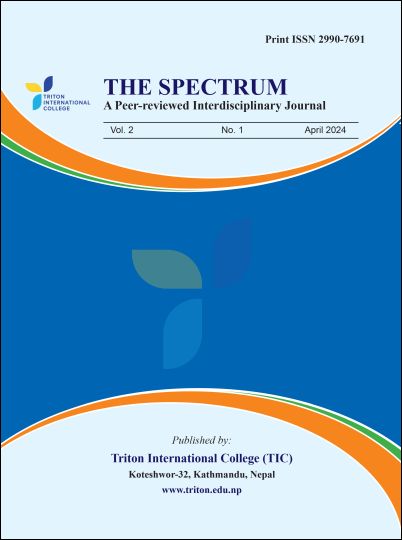Dream and Archetype: The Perpetuation of Rituals and Myth Enacted in Sparsha
DOI:
https://doi.org/10.3126/spectrum.v2i1.64768Keywords:
Collective Unconscious, Dream Images, Contestation, The Good Mother, NwagiAbstract
Myths, rituals, and dreams have been common traits of human beings; the underlying structure that underpins the interconnection between them and their inexplicable meanings coherently conjoined within has been a part of investigation. Accordingly, this paper analyzes dreams and archetypes for the formation of rituals in Nabin Chauhan-directed short movie Sparsha in the light of Carl Gustav Jung’s notion of ‘archetype’ and ‘collective unconsciousness’ and Joseph Campbell's understanding of myth. Sparsha presents a contestatory story of father and son because of divergent opinions regarding performing rituals. However, Aarohang, the son, ultimately observes rituals reconciling the discrepancies and difficulties. Against this backdrop, this paper argues that archetype necessitates performing a recursive pattern of behavior that becomes a ritual of a particular group of people, which is an enactment of a myth. In other words, Sparsha represents the conglomeration of archetypes and myths that unconsciously function in dreams, paving the way for observing the myths in the form of rituals. The paper discloses ritual has a long psychological trial deeply rooted in human instinct, conditioned by unconscious force and dream manifestation, and grilled by mythological narratives. This connection is the primary source that fuels the mechanism that perpetuates the domain of rituals thereby clinging to mythology.
Downloads
Downloads
Published
How to Cite
Issue
Section
License
Copyright (c) 2024 The Author(s)

This work is licensed under a Creative Commons Attribution-NonCommercial 4.0 International License.
This license allows reusers to distribute, remix, adapt, and build upon the material in any medium or format for non-commercial purposes only, and only so long as attribution is given to the creator.




